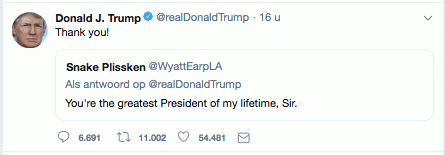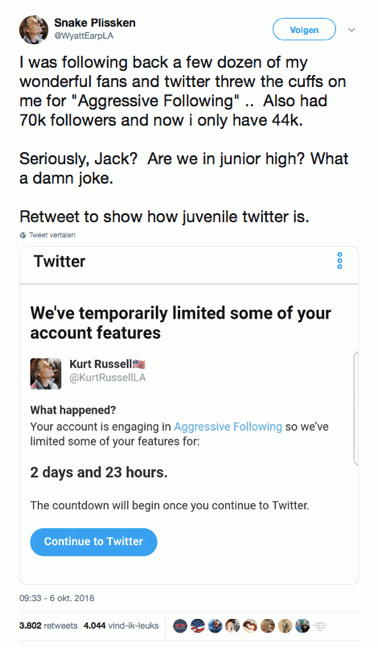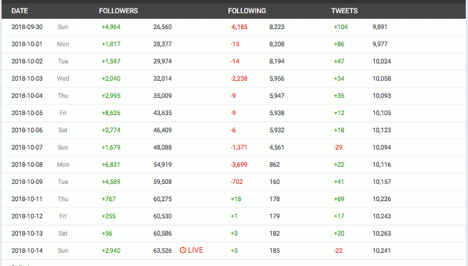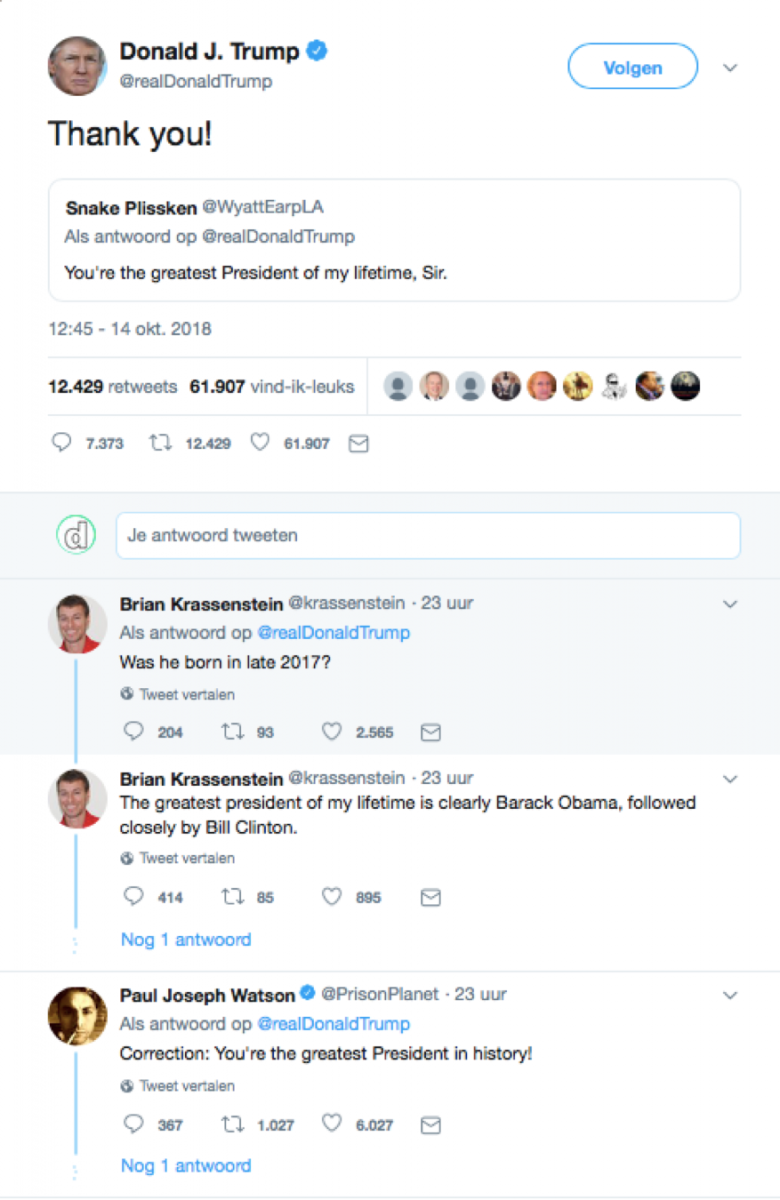
Algorithmic populism and algorithmic activism
Digitalization gave birth to a new form of populism: algorithmic populism. If we want to understand contemporary populism, we should understand it in its social, political, economic and technological context. Algorithmic populism cannot be understood without taking the uptake and algorithmic activism in particular into account.
Populism and computational agency
In the digital age, political discourses are only to a small extent produced by politicians. Millions of citizens, activists, bots and even algorithms (re)produce political discourses (Maly, 2018). That is why it does not suffice to look at the input and why attention for the uptake is at least as important. The affordances of digital media and Web 2.0 push us towards understanding populism as a digitally mediated communicative relation between different human and non-human algorithmic actors.
Digital media have fundamentally altered the fields of media and politics, and studying politics and populism in particular inevitably means that we should include these media in our analysis. Social media like Facebook and Twitter allow politicians to control their own voice and message, but they only control it within the given formats of the social medium they use. These media come with specific affordances and as such they not only shape the discourse; they contribute to the construction or destruction and distribution of the populist voice.
The number of followers, likes and retweets are political facts.
Digital media are not just intermediaries anymore – the message is not just distributed by digital media but also shaped and altered. Digital media and social media in particular are non-linear. They (re)shape and re-organize the communicative structure of the ‘input’-discourse. They have agency and are best understood as mediators (Tufekci, 2015).
The algorithms, and the general affordances of these media are staked on neoliberal principles, which translate into the valuing of hierarchy, competition and a winner-takes-all mindset (Van Dijck, 2013: 21). These media are not ‘just’ neutral platforms connecting users sharing content: their agency reflects the underlying media-ideology. In these digital media, the popularity principle which states that ‘the more contacts you have and make, the more valuable you become, because more people think you are popular and hence want to connect to you '(Van Dijck, 2013: 13) is king.
Algorithmic populism
Within this logic, being a populist without online followers is a contradiction in terms. Politicians, and populists in particular have to build a large audience if they want to claim to be speaking in name of the people. Each post needs to reach an audience that actively supports or at least interacts with the mediatized voice, so that the algorithms push it into relevance. Each post has to have ‘likes’, ‘retweets’ and ‘comments’.
The populist has to produce ‘popular posts’. Producing such posts is clearly not just a matter of content, it is also about knowledge about the medium itself and the algorithms and affordances that organize the distribution of posts. The algorithms of these media have agency (Tufekci, 2015), they ‘select and prioritize content by algorithmically translating user activity into ‘most relevant’ or ‘trending’ topics.’ (Van Poel & Van Dijck, 2014).
In order to construct the ‘populist voice’, the politician first of all has to build his or her own followers. These followers are the first people that can interact with a post and as such can give it the aura of ‘being popular’ and make it seem like the politician is really articulating ‘the voice of the people’. The number of followers, likes and retweets are political facts. Depending on the success, or the hype and discussion a post generates, it will be distributed further and become visible to more people. Moreover, in many cases it will trigger journalists to write about it, and as a consequence they can reproduce (or question) the politician’s claim on ‘the voice of the people’.
Algorithmic activism contributes to spreading the message of a politician or movement by interacting with the post
Social media have thus become political battle fields. The configuration of these media makes it crucial for a wannabe populist to not only build his or her audience, but also make sure that their posts generate retweets, shares and likes. Without interaction, the populist will never be able to make the populist claim.
This process is at least partially algorithmically constructed. On Facebook, for instance, we see that the number of interactions, and especially shares will make your post more visible on the News Feeds of your followers (Maly & Beekmans, 2018). On Twitter, we see that the more interaction (likes, comments and retweets) a tweet generates, the more chance it will have to be featured as a Twitter Highlight and thus the higher the chance becomes that Twitter will make this highlight visible to potential new audiences (Twitter, 2018). Likes, retweets and shares are thus not only important in creating a perception of popularity; it is also algorithmically important to reach out to an ever-larger audience.
Algorithmic activism
Numbers matter. Popularity is a coded and quantified concept and as such it is manipulable (Van Dijck, 2013: 13). It is no wonder that this not only gives birth to a new kind of populism, but also to a new type of activism. We could call this ‘algorithmic activism’. This type of activism contributes to spreading the message of a politician or movement, by interacting with the post in order to trigger the algorithms of the medium, so that it boosts the popularity rankings of this message and its messenger.
This type of activism, when intentional, presupposes that the activists not only subscribe to the message they interact with, but also understand the affordances and the algorithmic construction of the medium. Algorithmic activists use (theoretical or practical) knowledge about the relative weight certain signals have within the proceduralized choices the algorithms of the media platforms make as proxies of human judgment, in relation to the goals of the medium itself.
This type of activism can be organized in many different ways. It is dependent on the different platforms where the political battle is fought, on the knowledge and the technological competences of the activists, the mobilization power of the militants and their financial means. In its most basic organization, it consists of individual activists or militants who use one or more social media accounts.
The case of pro-Trump activist @WyattEarpLA
This type of simple activism is everywhere around us. Every politician's Twitter or Facebook posts will not only come with reactions from 'citizens', but also from activists, who will challenge or support the politician by reproducing their Message (Lempert & Silverstein, 2012). That this voice is relevant and important can, for instance, be seen when President Trump retweets a post of an activist called @WyattEarpLA. This was a post that generated 11:002 retweets, 54.481 hearts and 6.691 comments in16 hours.

Donald Trump Retweets Activist - 14 October 2018
By retweeting this tweet, Trump clearly tries to portray himself as a president that has popular support. This also seems to be exactly why @WyattEarpLA produced this tweet in the first place. If we take a look at his account, we see that all tweets of @WyattEarpLA are deeply political, leaving no doubt about his political orientation. Snake Plissken is explicitly conservative, pro-Trump and anti-Democratic. He regularly retweets Donald Trump and Donald Trump jr. and constantly retweets pro-Trump activist accounts like @_ImperatorRex_, @drawandstrike and @weneedtotalk. Democrats, on the other hand, are being described as 'left wing communist hate mobs', echoing Trump's discourse explicitly.
It is safe to say, that @WyattEarpLA is embedded in a network of MAGA-activists. This particular activist account was created in April 2018. More specifically, according to Social Blade, it was created on 24 April 2018. With 10.236 tweets in less than 6 months, @WyattEarpLA is a very active tweep. What's more, in these same 6 months he has managed to gather over 63.000 followers. This account in itself has become a 'micro-medium'. Since 30 September 2018, @WyattEarpLA has gained 36.966 followers. This steep rise, we can safely assume, does not happen from scratch, it needs extensive work. Work that is also done by the president himself, who by quoting this activist has contributed to the 2940 rise in followers for @WyattEarpLA on 14 Oktober 2018.
Creating such a large following can be established through many different ways. Producing 'good tweets' that generate retweets by popular accounts, like the one of the president, is one way;the use of bots and click farms would be another. Another, old skool activist way would be to engage in mass following, in the hope that they follow you back.
Looking at the stats of Social Blade, we see that #WyattEarpLA has indeed been engaged in mass following. The fact that this tactic of aggressive following is detected by the Twitter algorithms and resulted in a block, is immediately being used to further build up an audience. @WyattEarpLA taps in a dominant myth in these MAGA-circles that portrays Twitter CEO Jack Dorsey as part of the 'liberal elite' that tries to control and censor 'conservative voices'. (Note that in the screenshot, @ WyattEarpLA was going under the name Kurt Russel (@KurtRusselLA), which could also have contributed to his large amount of followers.)

@WyattEarpLA - Aggressive Following
With some presidential help, insight in the MAGA-niche, and time-investement (and claiming a celebrity name), an anonymous account has created a mass-following. His followers are 'informed' on a daily basis about the 'angry left mob', about how good Trump is, about Trump's speeches and the general stance they have to take. More importantly, his tweets are also being retweeted and liked by other 'pro-Trump' citizens and activists on a massive scale.
Algorithmic activism and the follower-following-ratio
In the tweet above, @WyattEarpLA speaks to his followers as if he is a true celebrity and they are his fans. Indeed, looking at the numbers, his account resembles the follower-following ratio of a celebrity. On 18 October 2018, @WyattEarpLA follows only 199 accounts (compared to more than 60.000 followers). Such a follower-to-following ratio is usually read as an indicator of success. Not that many non-celebrities succeed in obtaining such a ratio.
We can safely say that it requires skill and insight to obtain this 'golden ratio', especially within such a short timeframe. The tactic the account has used to obtain this ratio does neatly align with the guidelines in a widely circulated Pastebin Document for Advanced meme warfare. Under the section 'outreach', we find the following guideline for gaining followers for your 'activists acounts'. "FOLLOW / UNFOLLOW. This is the essence of gaining free social media traffic. You want to follow a hundred or so people every day per account, and unfollow the ones who don't follow back after a couple days. After a few weeks, you'll have #XXX - #XXXX followers per account." If we again look at the followers-following ratio in Social Blade, we see exactly this strategy unfolding.

Social Blade - overview @WyattEarpLA
All this is politically relevant, not only because it creates a pro-Trump micromedium with a large audience, but also because the larger one's following is, the more 'relevant' the Twitter algorithms will find the comments of these accounts on for instance Trump's tweets. Since 2016, Twitter does not show these responses in chronological order anymore. They are now personalized, or more concretely, algorithmically reorganized according to their relevance for the person looking at them. Twitter explains it as follows: 'Replies are grouped by sub-conversations because we strive to show you the best content first, and what we think you’d be most interested in. For example, when ranking a reply higher, we consider factors such as if the original Tweet author has replied, or if a reply is from someone you follow.'
The more followers this pro-Trump-activist has, the more chance his responses to Presidential tweets will pop up in the top comments for anyone of his followers, as the algorithm will deduce its 'relevance' for them. The more followers an activist has, the more they will be able to help the president in his claim on 'the voice of the people'. The affordances of social media thus shape a new type of activism. This activism not only focuses on 'fast' responses, but also on increased interaction and on building a bigger audience reach.
Social media and the political battle field
Social media have become important political battlefields, and this discursive war is not only a pro-Trump war, other activists (and opportunists) have joined the battlefield as well. Anno 2018, Trump cannot tweet anymore, without receiving an enormous backlash. Every single tweet receives - next to retweets and hearts - an avalanche of critical comments within minutes.

Brian Krassenstein Response to Trumps Tweets
People like the twin brothers - Brian and Ed Krassenstein and like @ChristopherJZelo have proven to be masters at this game. No matter if you follow them or not, chances are high that you will encounter their comments first under Trump's tweets. The brothers have a long history in the (scammy) digital economy, and clearly understand the Twitter ecology. Just like the MAGA-activists, they are able to push their comments into virality, obtain an excellent follower-following ratio and build a huge audience themselves while doing this.
It's also here that we see how social media, their algorithms and affordances reshape the political field. New kids on the block - like the twin brothers Krassentein - can now, without any party or movement behind them, claim an important place in the political field. What's more, they can take up 'activism' for their own profit. @ChrisJZulo's primary aim, for instance, seems to be to sell his book and his TagAmericaBlue.com - merchandise and the brothers Krassenstein promote their own website Hillreporter.com.
Their understanding of the protocols and algorithms of Twitter gives them a huge voice against Trump, but they do not seem to be part of a broad movement or party. At the same time, they partially shape the resistance against Trump. It is their algorithmic voice, that creates the necessity for 'pro-Trump'-activist to build and maintain their own network of 'algorithmic activists'. Dominating the comments underneath and thus making sure that pro-Trump-comments are pushed to relevance is an endless battle of producing comments that resonate, made by accounts who have a large following. This can be done by 'real accounts' of celebrities or key activist figures within their niche (see for instance how Paul Joseph Watson from Infowars does this) or by setting up activist accounts and 'farm them steadily'.
Understanding algorithmic populism
Populism in the age of digitalization has fundamentally changed. Citizens and human and non-human activists all co-construct the Message of the populist and the resistance against it. Algorithmic activism has become a key ingredient in the construction of the 'voice of the people'. Activists for or against the 'populists' are engaged in an endless algorithmically shaped battle to co-construct the 'voice of the people'.
In its most elaborate form, the construction of the populist voice consists of huge bot networks, backed up by many militants, databases and financial means to fully exploit the affordances of social media. This type of professionalized activism is not unique, it has and will become key in the political battles of the future.
Digitalization forces us to look at populism as a digitally mediated communicative relation. Populism cannot be studied by only looking at the input-side anymore. The uptake is at least as important.
References
Lempert, M. & Silverstein, M. (2012). Creatures of politics. Media, message, and the American Presidency. Bloomington and Indianapolis: Indiana University Press.
Maly, I. (2018a). Nieuw Rechts. Berchem: Epo.
Maly, I. (2018b). Facebook and the end of the public sphere. Diggit Magazine.
Maly, I. (in review). The New Right, global nationalistic activism and the Flemish identitarian movement Schild & Vrienden. A case study.
Maly, I. & Beekmans, I. (2018). Research report: analyzing Facebook's Guidelines for publishers. Diggit Magazine.
MYNUNUDONALDACCOUNT, (2016). Advanced Meme Warfare /cfg/. Pastebin.
Poell, T., & van Dijck, J. (2014). Social Media and Journalistic Independence. In J. Bennett, & N. Strange (Eds.), Media independence: working with freedom or working for free? (pp. 182-201). (Routledge research in cultural and media studies; No. 69). New York: Routledge.
Tufekci, Z. (2015). Algorithmic harms beyond Facebook and Google: Emergent challenges of computational agency. COLO. TECH. L.J., 2015 (vol13.)
Twitter, (2018). Highlights. Twitter.
Van Dijck, J. (2013). The culture of connectivity. A critical history of social media. Oxford & New York: Oxford University Press.